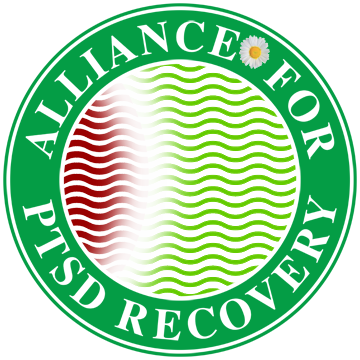
Fourteen peer-reviewed scientific studies have been published so far on Transcendental Meditation, showing that it is a highly effective tool to reduce Post-Traumatic Stress Disorder, PTSD.
The following chart shows the “effect size” of all the 14 studies. Effect size means how large a positive improvement is made with Transcendental Meditation for all peer reviewed studies, on war refugees, veterans, students and prisoners with PTSD. For each of the fourteen studies there is a large improvement made with Transcendental Meditation (TM), often within just 30 days of of learning TM.

small positive effect: 0-.2
medium positive effect: 0.5
large positive effect 0.8
Every peer reviewed study has a result greater than 0.8, which is a large positive effect of reducing PTSD.
These studies include:
Veterans and Active Military
In November, 2018. Lancet Psychiatry published a study that compared Prolonged Exposure (PE) with Transcendental Meditation (TM) at reducing PTSD. The study tested to see if TM was at least as good as PE, which is one of the two top recommended standard treatment protocols used by the military, along with pharmaceuticals, to reduce and eliminate PTSD.
The study showed that TM is certainly as good as PE.
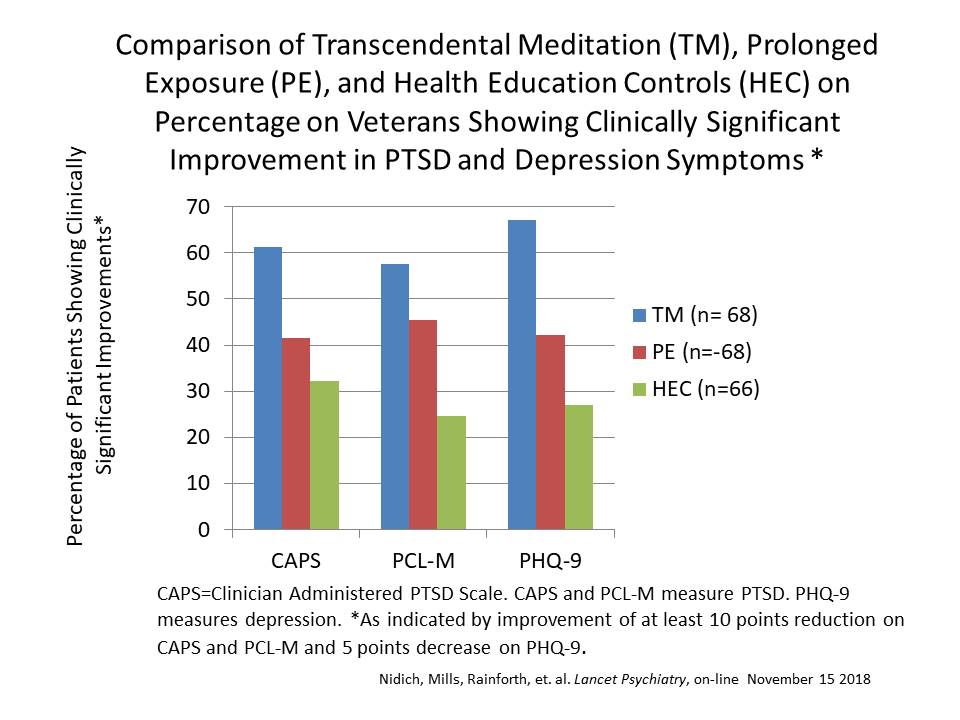
Lancet Psychiatry Study: Nidich, Mills, Rainforth, et. al., “Non-trauma-focused meditation versus exposure therapy in veterans with post-traumatic stress disorder: a randomized controlled trial” Lancet Psychiatry, on-line November 15 2018
March, 2021 Journal of Traumatic Stress published pilot study showed that Transcendental Meditation is highly effective at reducing PTSD, depression, anxiety and insomnia. Around 50% of the veterans with PTSD were measured by gold standard CAPS (Clinician Applied PTSD Scale) and PCL-5 to be out of PTSD with Transcendental Meditation within the 3 months of testing, whereas only 10% of the treatment as usual controls (no TM practice) came out of PTSD in this time.
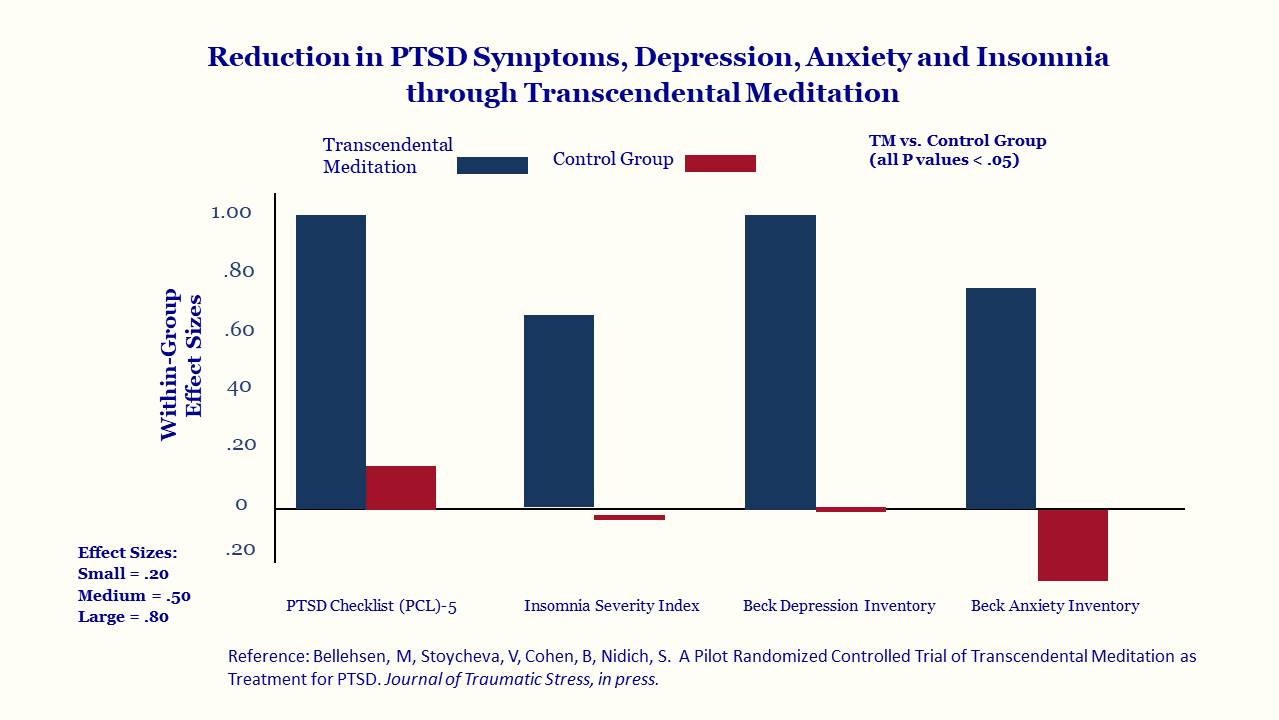
Bellehsen, M., Stoycheva, V., Cohen, B., Nidich, S. “A Pilot Randomized Controlled Trial of Transcendental Meditation as Treatment for PTSD.” Journal of Traumatic Stress, March, 2021.
2018 study on Veterans who learned TM who measured likely to have PTSD, found that 80% of these soldiers were likely out of PTSD in 30 days with TM, according to the PCL-C self-test. 87% out of PTSD in 90 days.
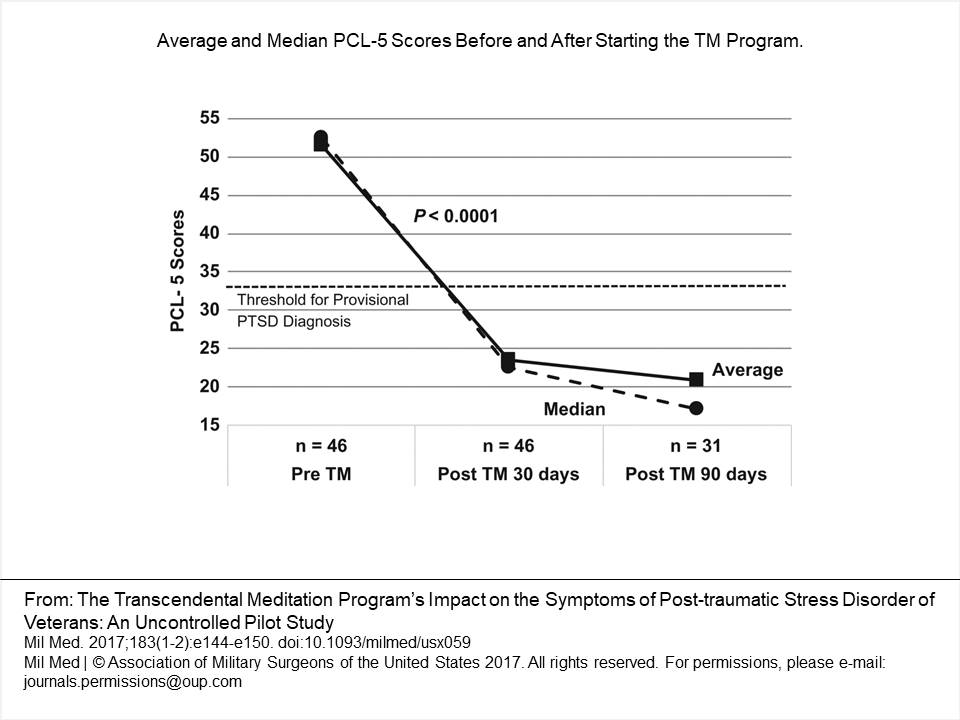
Herron, R.; Rees, B. The Transcendental Meditation Program’s Impact on the Symptoms of Post-traumatic Stress Disorder of Veterans: An Uncontrolled Pilot Study. Military Medicine, Volume 183, Issue 1-2, 1 January 2018, Pages e144–e150.
Displaced Persons/War Refugees
Congolese war refugees with high levels of symptoms became non-symptomatic within 30 days of learning Transcendental Meditation. The non-TM control group showed no reduction of symptoms within the 135 days of testing.
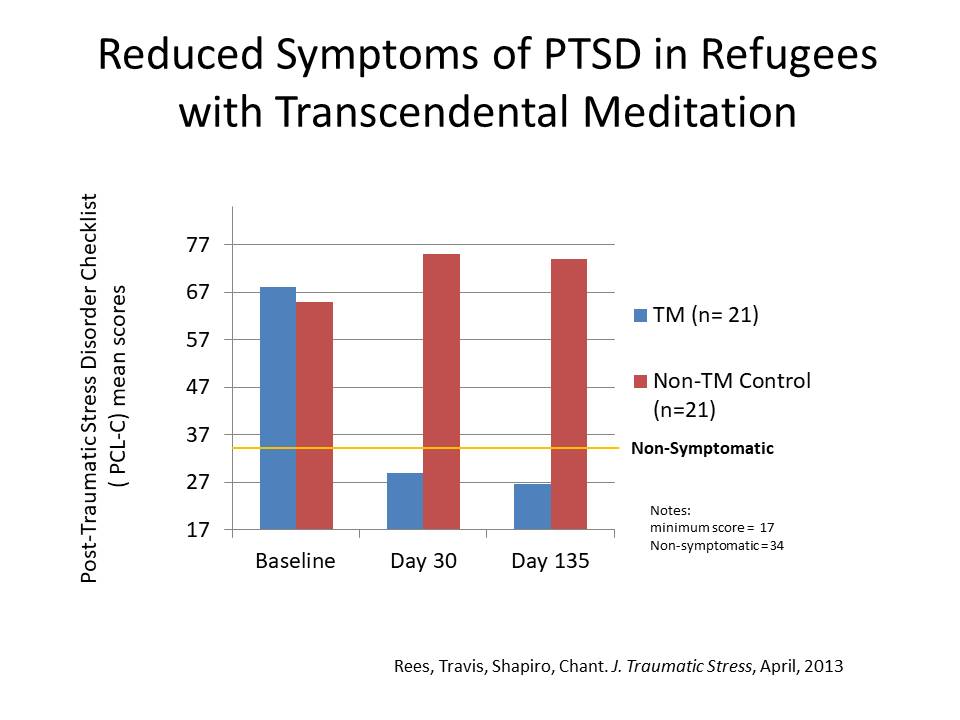
Rees, B. et.al. (2013). “Reduction in postraumatic stress symptoms in Congolese war refugees practicing Transcendental Meditation.” Journal of Traumatic Stress, 26: 1-4.
Medical Personnel, Nurses
Nurses showed a 53% reduction in PTSD symptoms within one month of TM practice and a 57% reduction in 3 months. In comparison, controls showed reductions of 9% in 1 month and 17% in 3 months. For more information, see Transcendental Meditation for Nurses
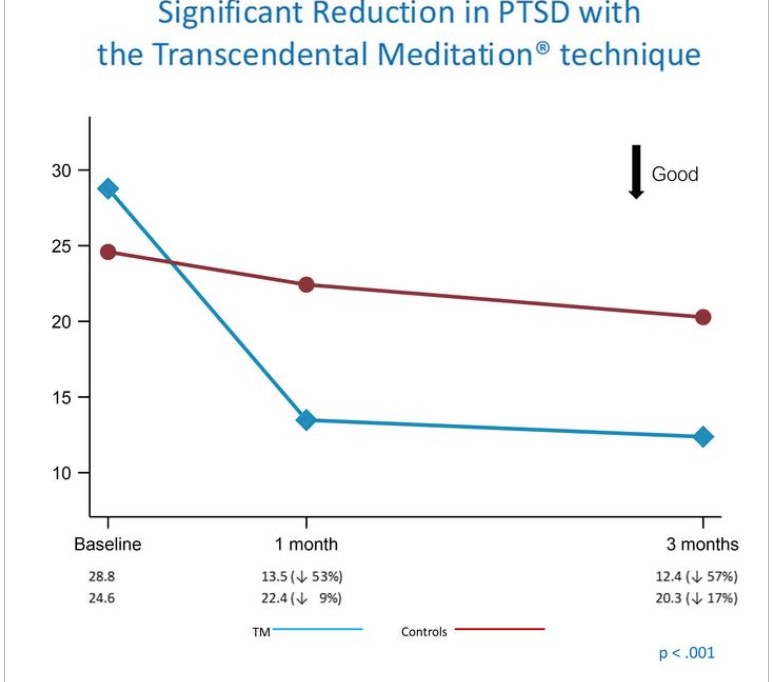
Bonamer, J. et al. (December 11, 2023) Clinical Nurse Well-being Improved Through Transcendental Meditation: A Multimethod Randomized Controlled Trial Journal of Nursing Administration, 10.1097/NNA.0000000000001372
Prisoners
Female prisoners were randomly assigned to TM or wait-list control groups. Over the four-month trial period, the TM group’s mean PCL-C scores fell below the non-symptomatic level, significantly greater reduction than the scores of controls.
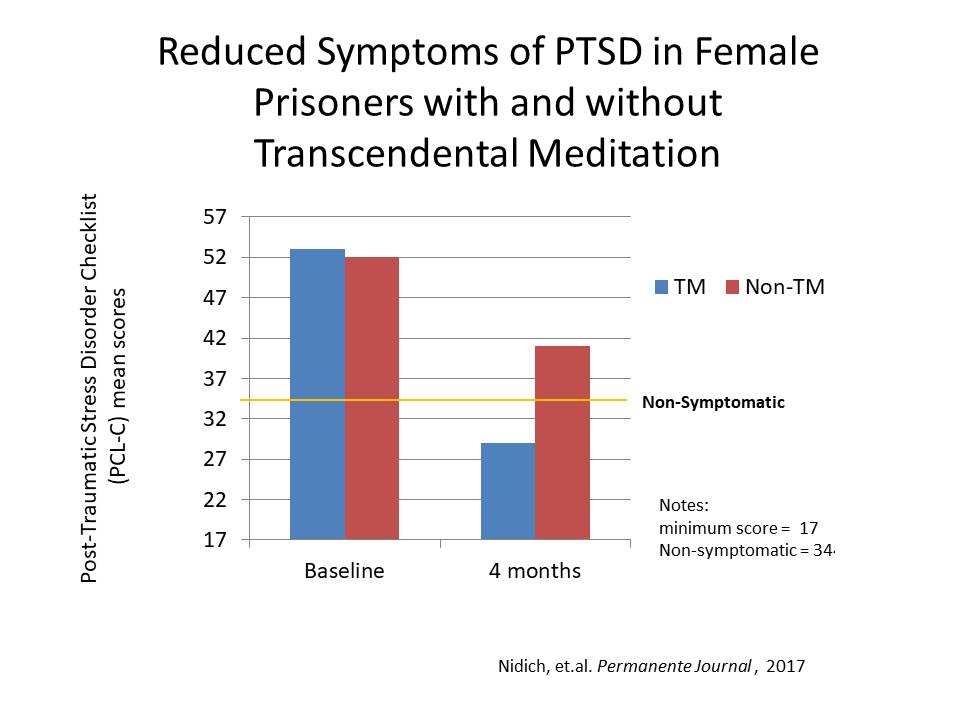
Nidich S, et al. (January, 2017) Transcendental Meditation and Reduced Trauma Symptoms in Female Inmates: A Randomized Controlled Study. Perm J, 21:16-008.
Students
Students in two colleges in South Africa with diagnosed PTSD were compared. The TM group at one university fell below the level of clinical diagnosis of PTSD, but the non-TM comparison group a the second college showed no reduction in symptoms during the 105 days of testing. Students who learned TM also became non-symptomatic for depression in 15 days, whereas the non-TM comparison group showed no drop in symptoms during the tests.
Reduced PTSD
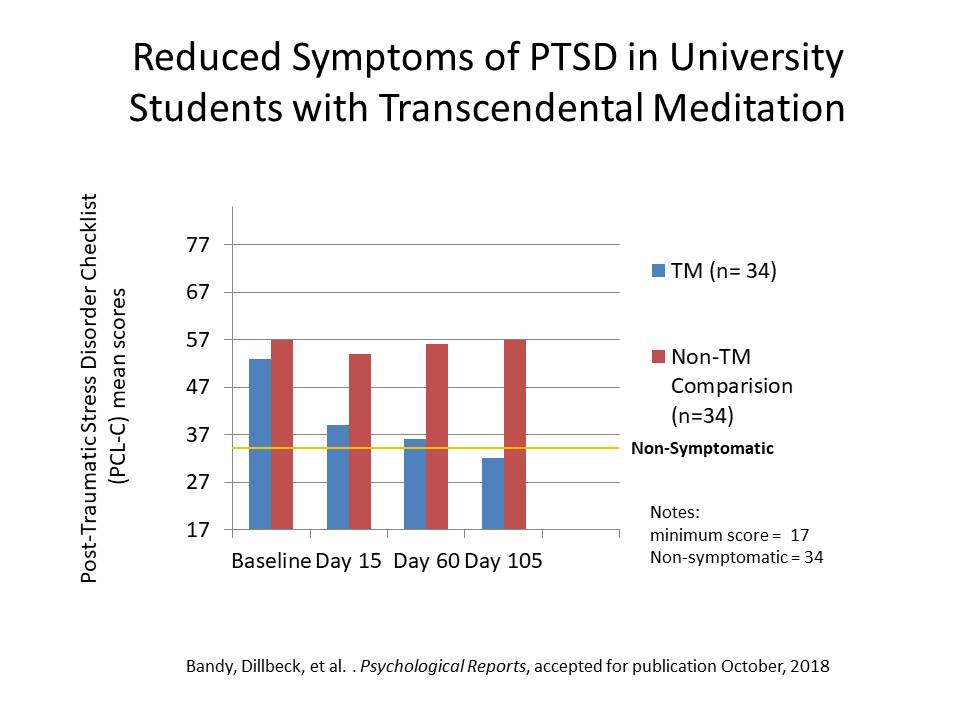
Reduced depression
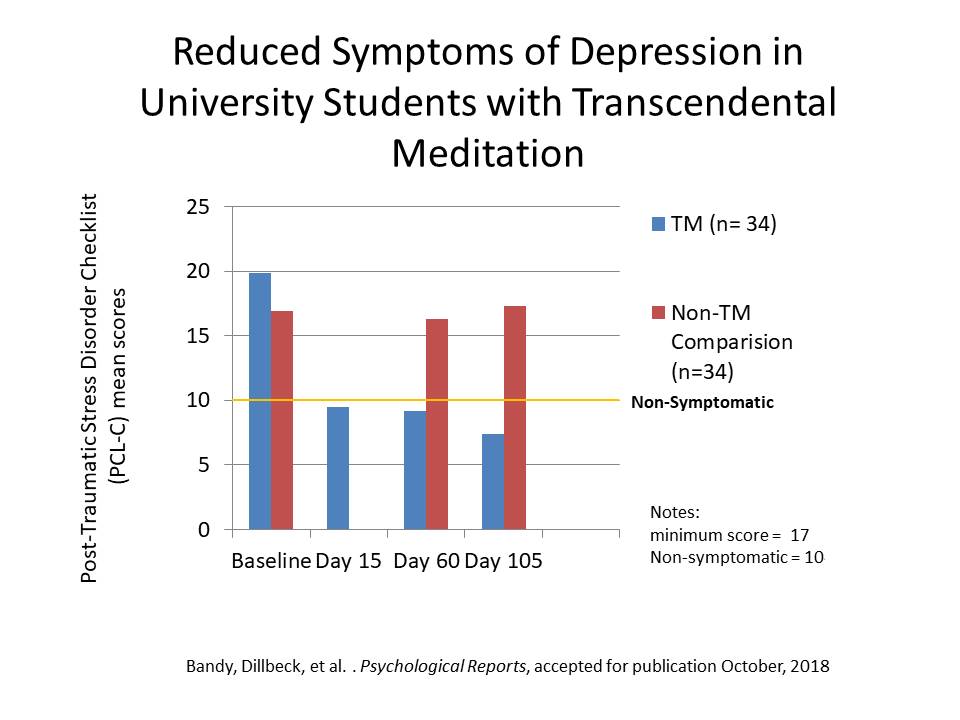
Bandy, C, Dillbeck, M., Sezibera, V., Taljaard, L., de Reuck, J., Wilks, M., Shapiro, D., Peycke, R. (2019) Reduction of PTSD in South African University Students Using Transcendental Meditation Practice. Psychological Reports. Published on-line Feb. 2019.
